This is an authorized translation in English of a post in French by @japon: Le temple Ninna-ji et ses jardins extraordinaires
As my primary language is not English, there are probably some mistakes in my translation.
Remember that the person that speaks here is NOT me, Vincent Celier (@vcelier), but @japon, a French guy.
Sometimes, there are places that you put on your list of visits, just because they are on the road, without thinking that nice surprises are waiting for you. That's what happened that morning. I had just visited Kinkaku-ji and its golden pavilion, then Ryoan-ji is its fabulous 15-stone garden. Next door is Ninna-ji, another Buddhist temple. Before taking the bus back to the center of Kyoto, I decided to go there.
This temple is best known for being a place of contemplation of sakura cherry blossoms in spring. I was there in October, the cherry trees are starting to lose their leaves, this is really not the ideal season. But I'm going anyway.
The temple looks big, very big. There are several entrances and I wonder if I'm at the right place. I ask the reception "Ninna-ji wa koko desu ka". With a big smile, the person tells me that I am at the right place.
The tour begins with a large courtyard surrounded by trees and shrubs, and large doors leading to different parts of the temple. A large map shows the extent of the complex, including a series of buildings on my left. I'm close by, I'll start with that.
I arrive in front of a big door, surrounded by huge pines. Inside I have to leave my shoes, the rest of the visit will be in socks. You can put your shoes in plastic bags and bring them with you, or leave them in lockers at the entrance (much more practical solution). The floor is covered with tatami mats, I see visitors who are finishing the visit with their shoes in hand.
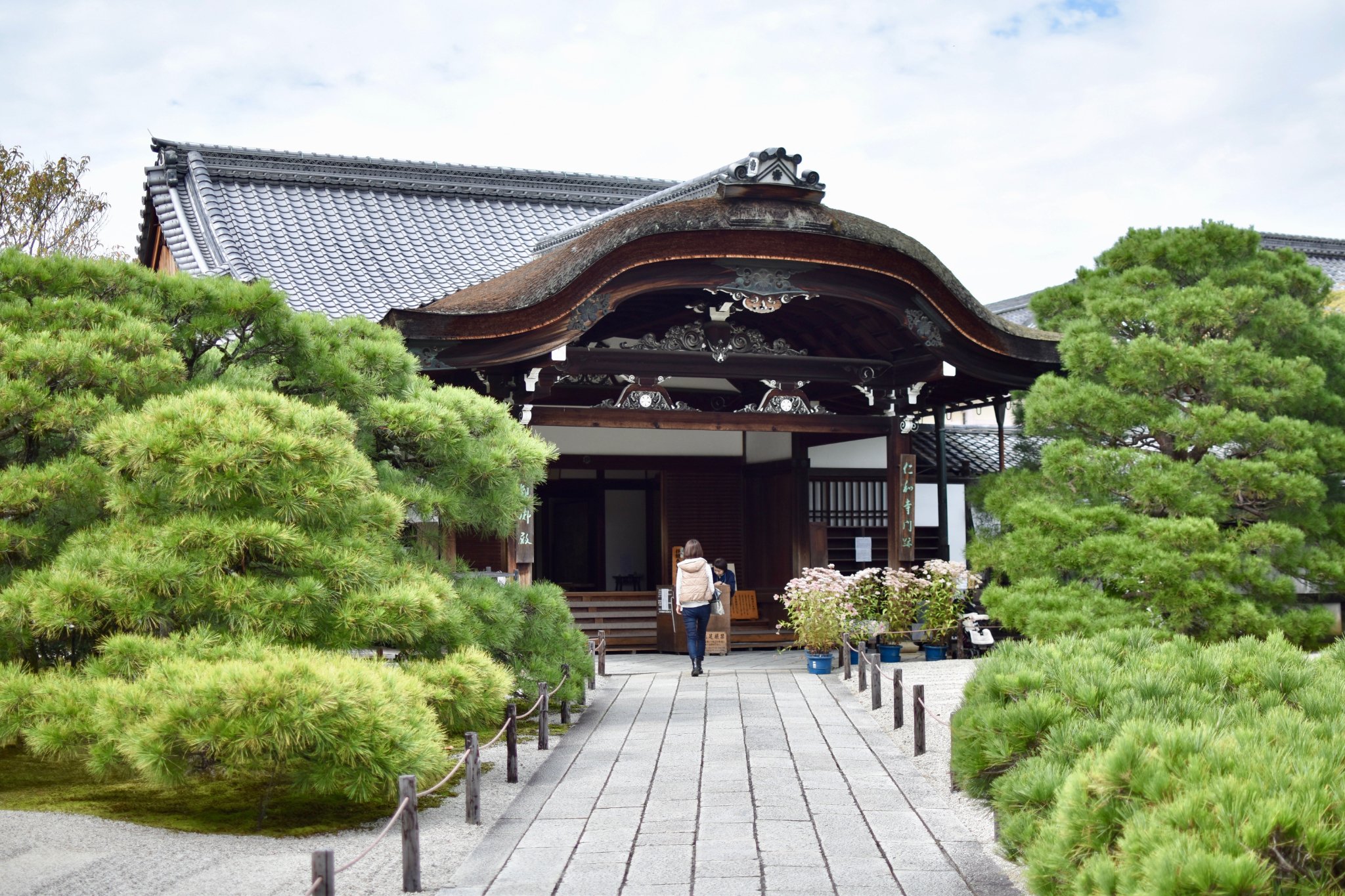
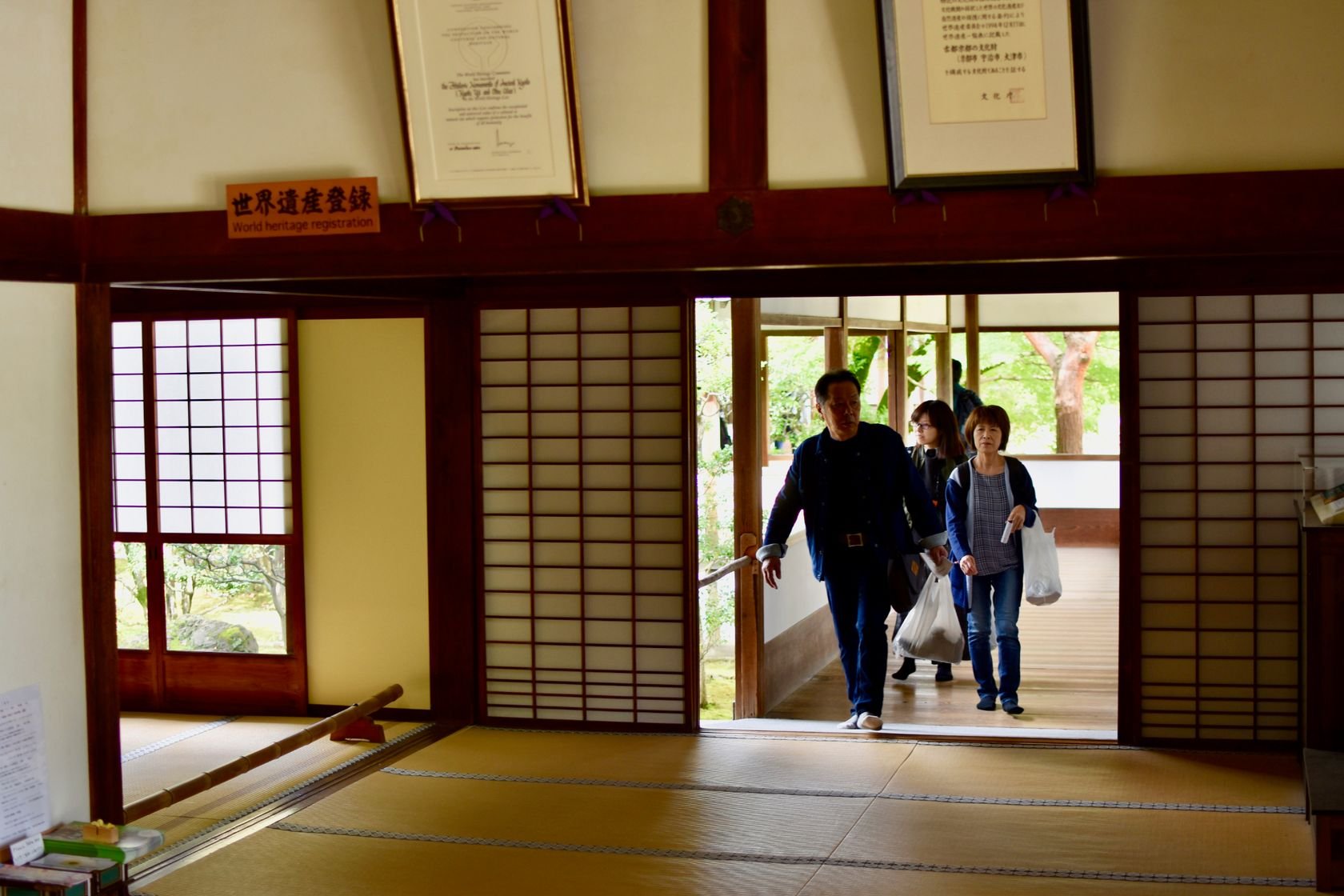
I walk through a series of wooden passageways. I remain speechless. It's just beautiful. We walk on small covered bridges, passing from building to building. There are a multitude of small gardens, all different. Some give pride of place to lanterns and small basins surrounded by some trees and moss. On the other side, a large Zen garden and its white gravel carefully raked. It's beautiful, I still have shivers just write these words.
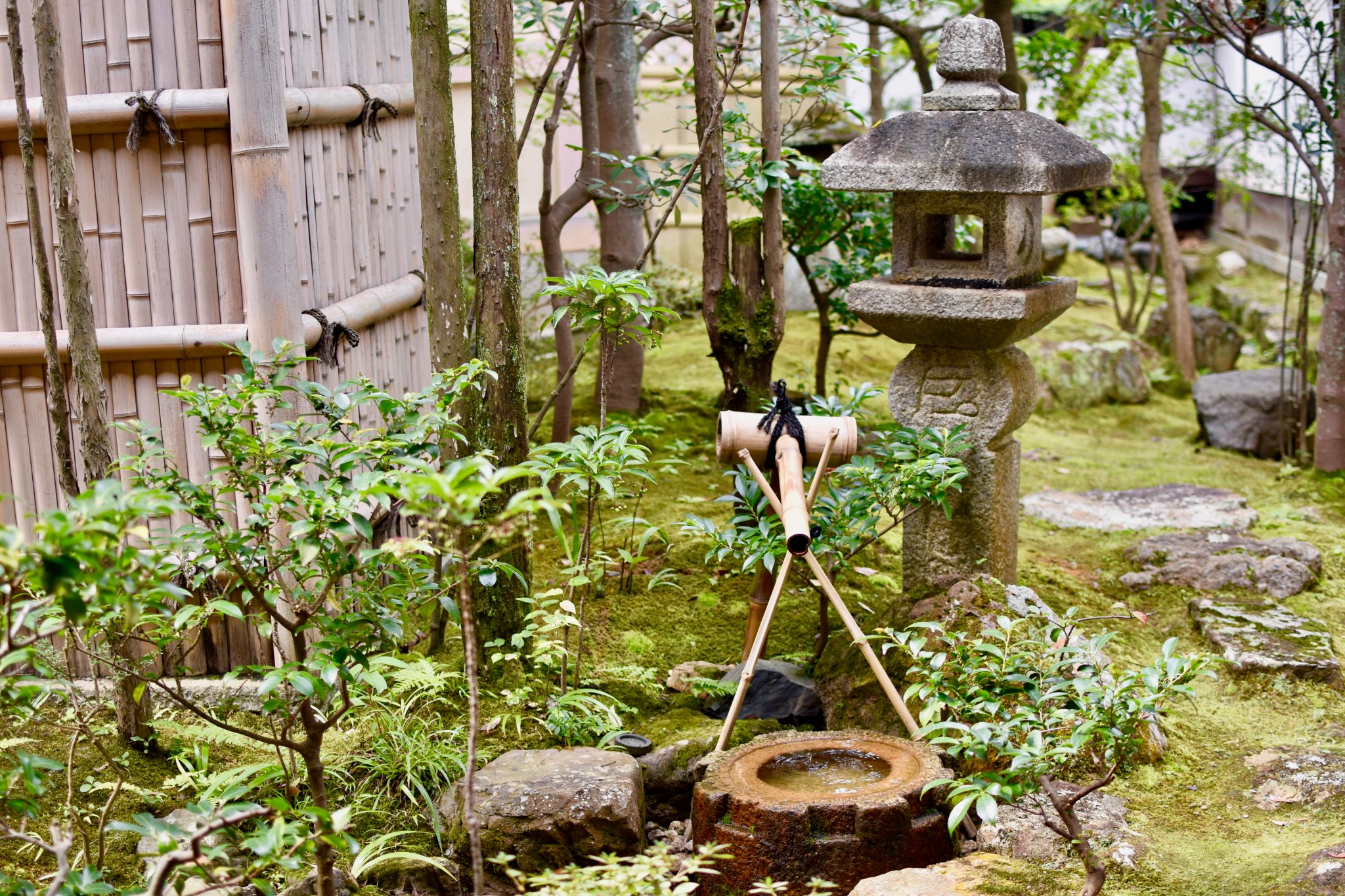
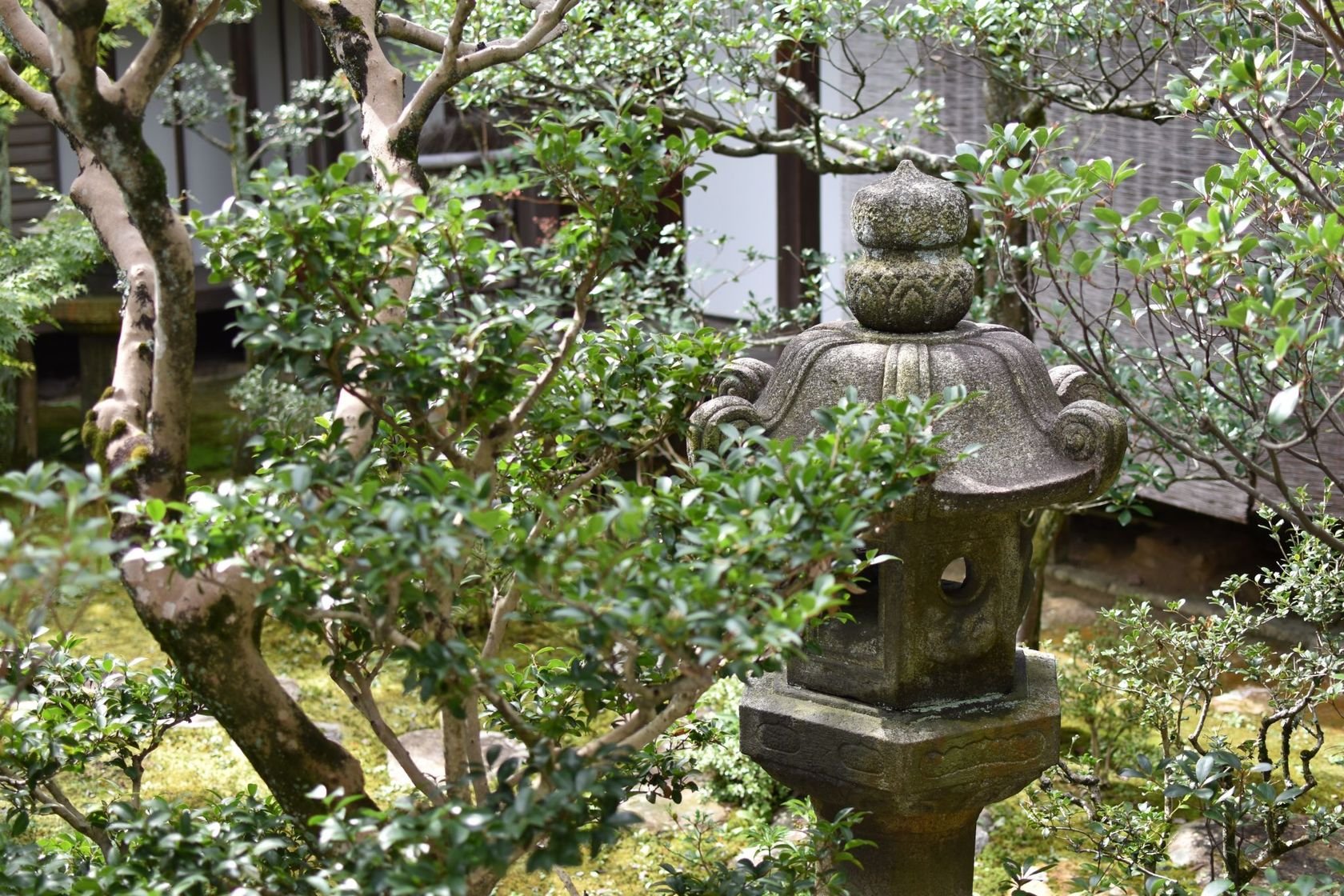
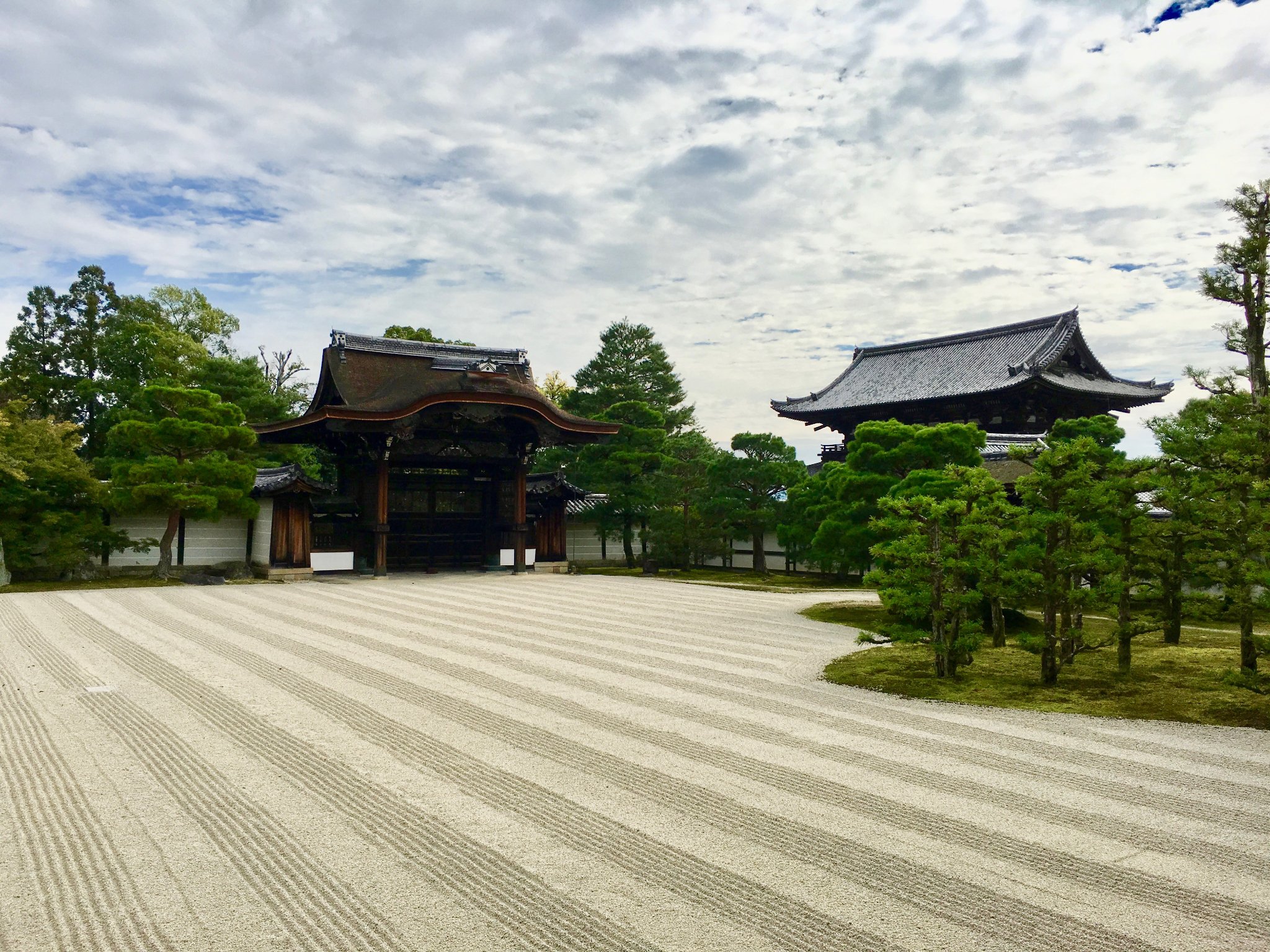
The architecture is amazing, entirely in wood. The ground is slightly worn by the numerous passages of visitors in search of a moment of peace and Zen. It is indeed one of the places where I really felt this particular atmosphere that I had come to look for in Japan. Walking and watching these gardens invites you to think. I was out of time.
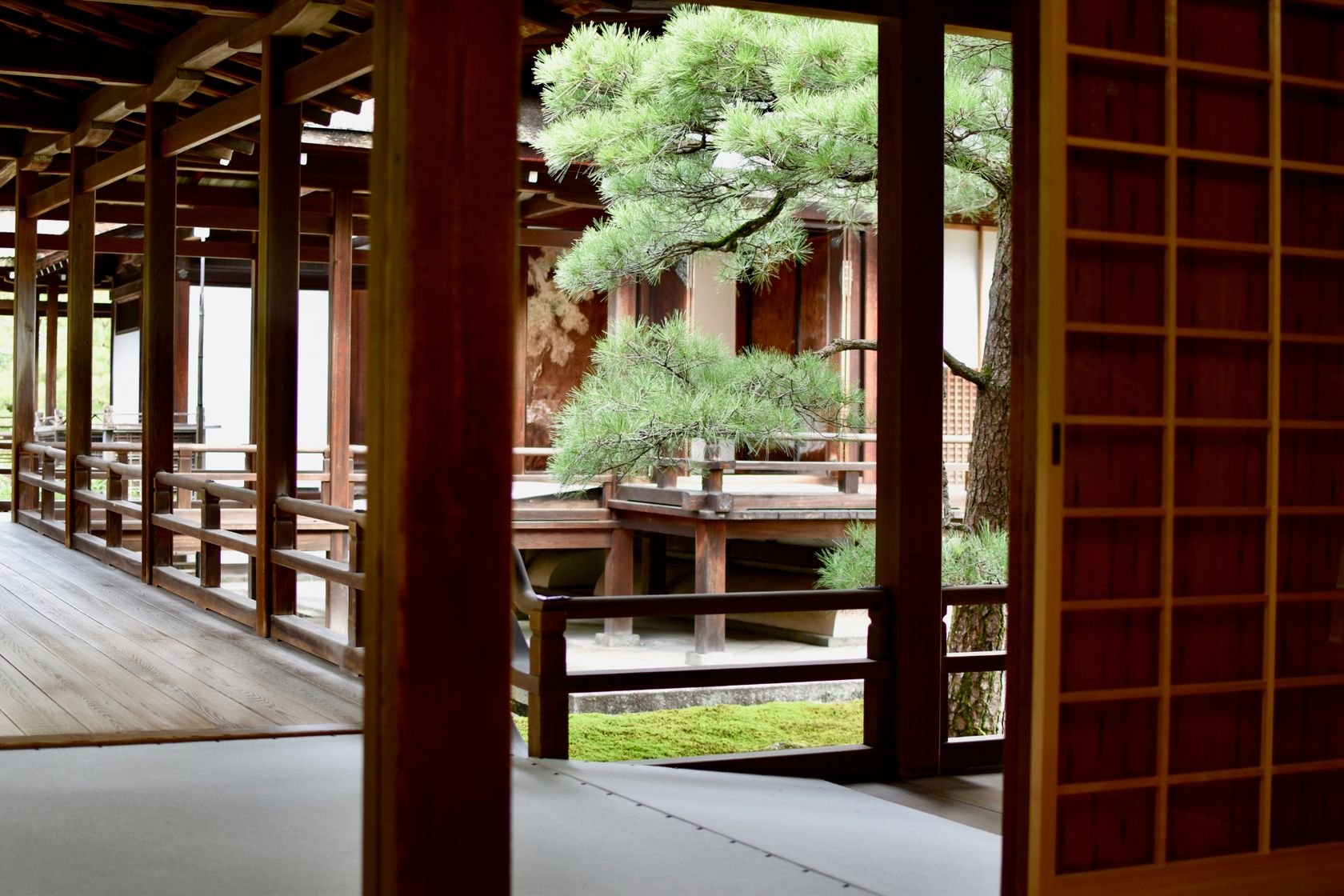

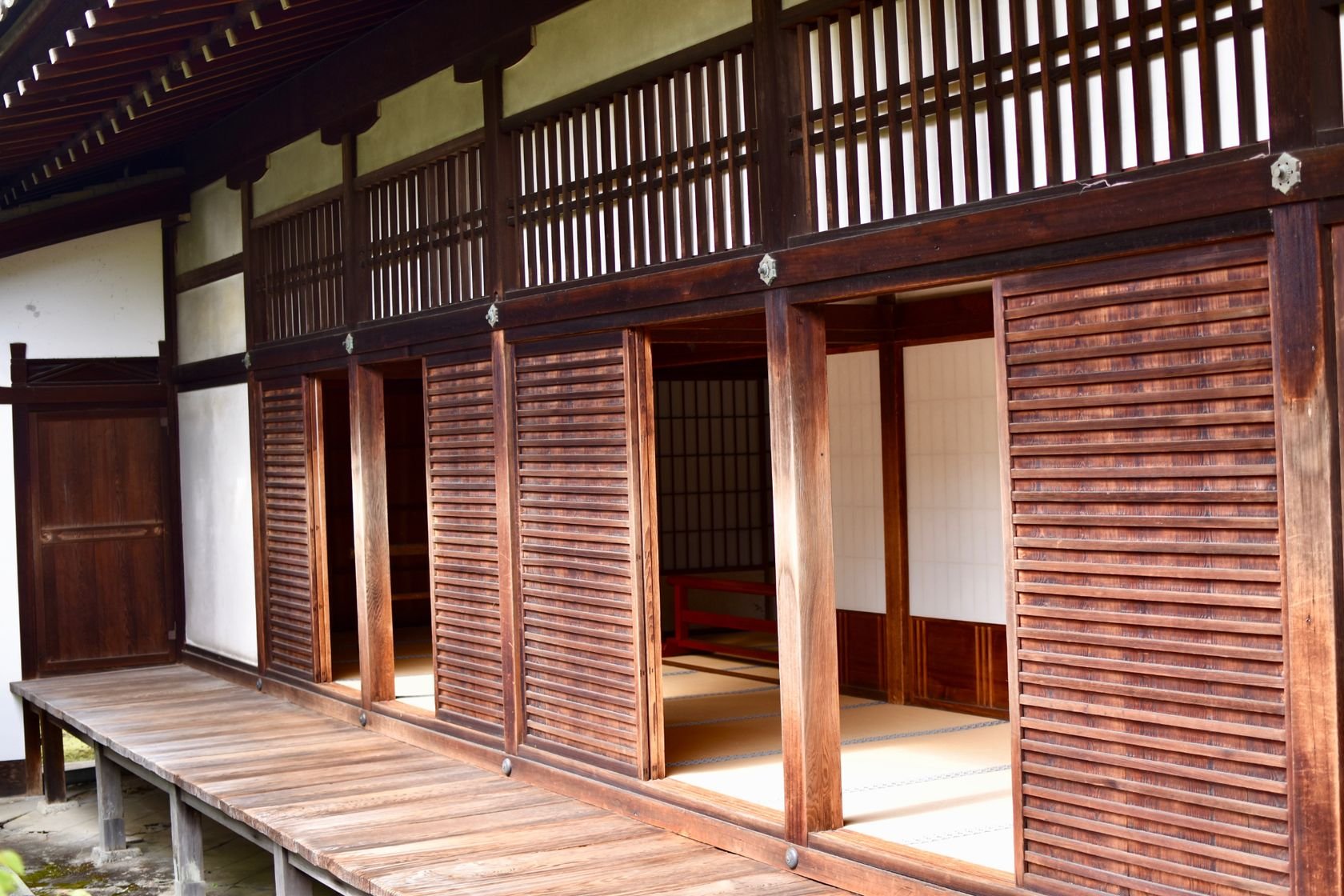

At the end, there is a very large dry garden surrounded by trees. Some students in uniform are sitting on the edge. They are there just to enjoy the atmosphere. I tell myself that the Japanese have a rather strong relationship with religion, very different from what I can see in Europe. I sit down a little further, silently, telling myself that I'm really lucky to be here.


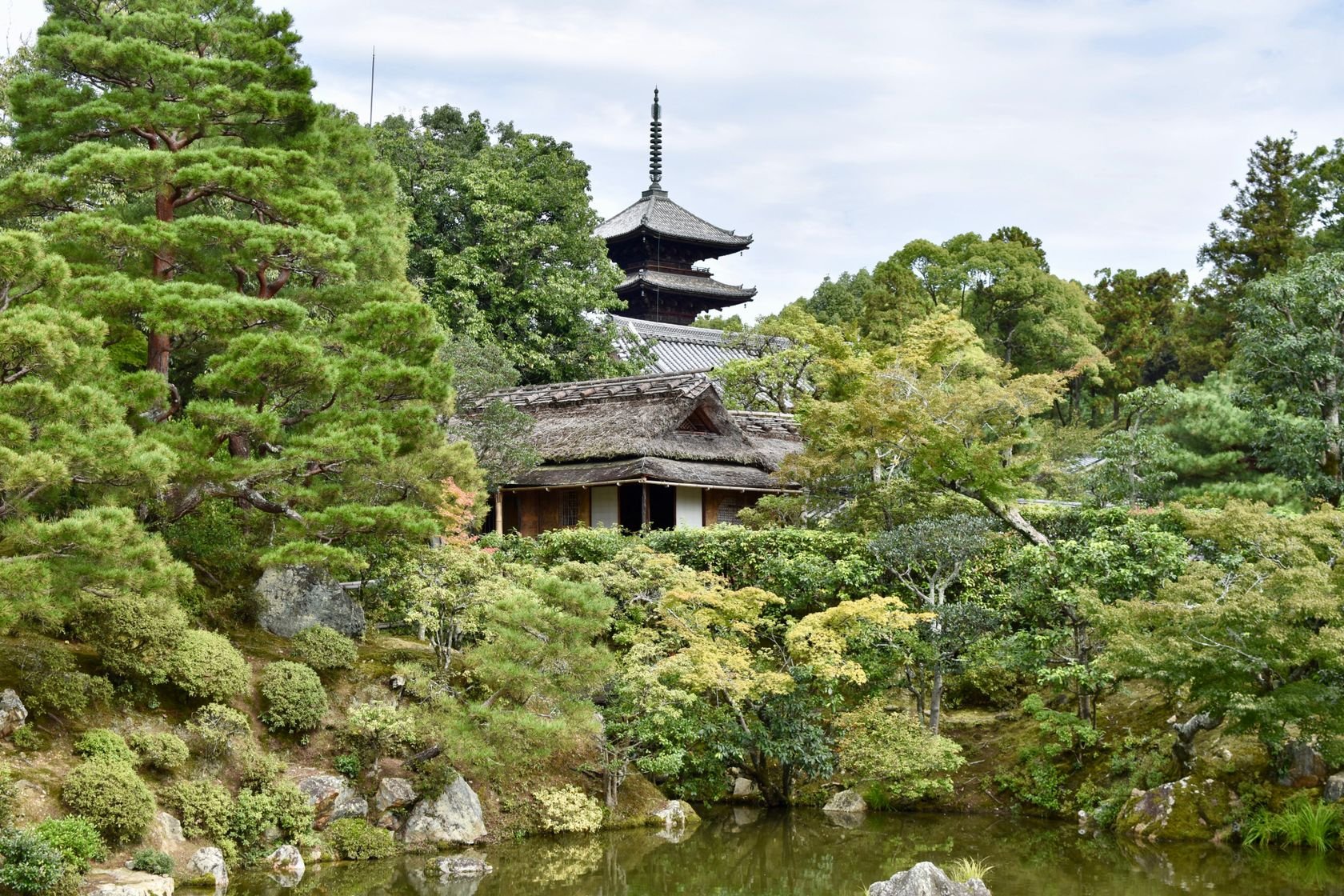
I am also surprised to see that the Ninna-ji temple is almost deserted. Hordes of tourists prefer to see the Golden Pavilion a few hundred meters away, and completely miss this wonderful place. The magic of the place lies in this alchemy between the gardens that are certainly the most beautiful in Kyoto, and these wooden walkways that invite a gradual discovery.
I would have stayed there for hours, but it is time for me to continue my journey, telling myself that I will return one day to Ninna-ji.

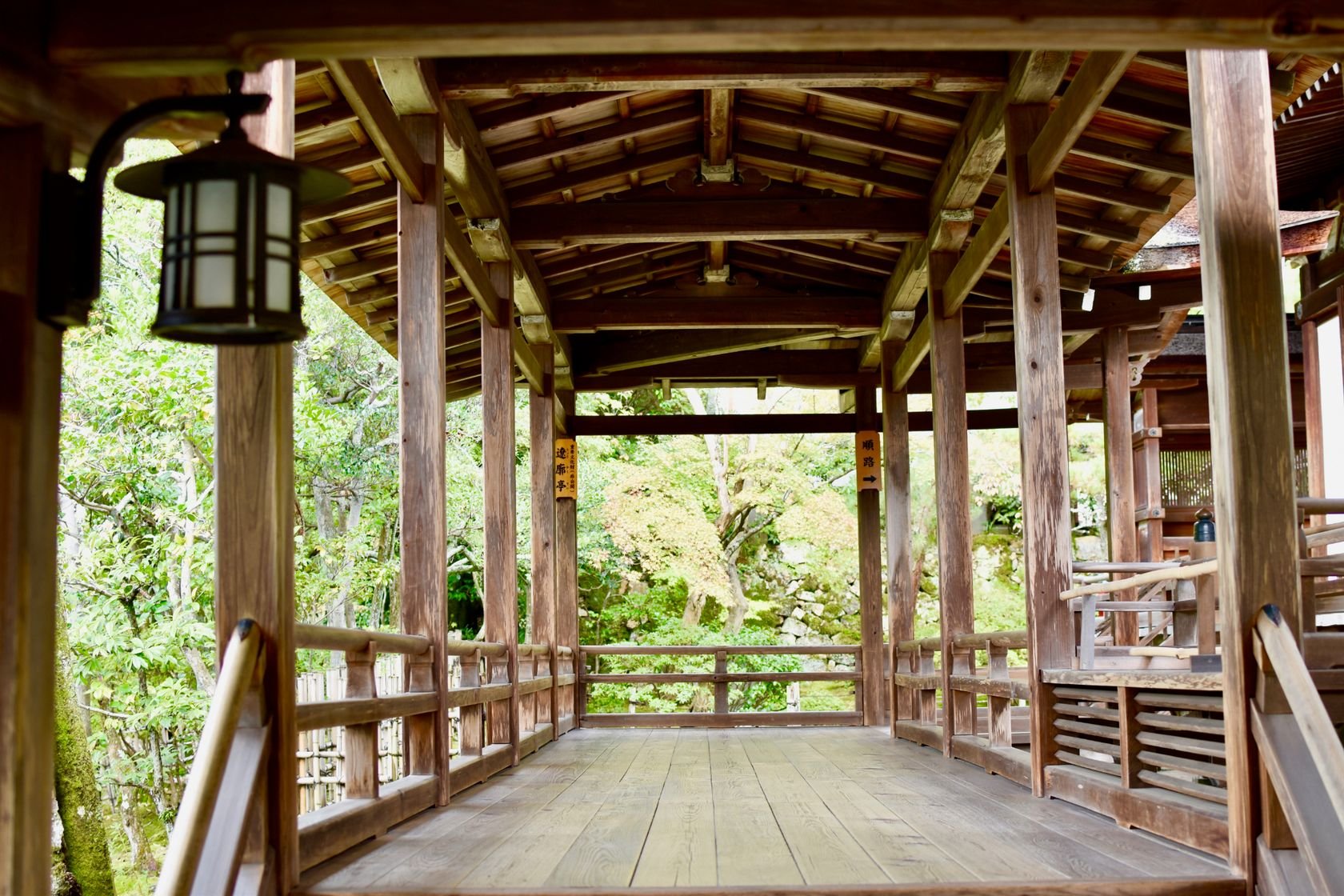
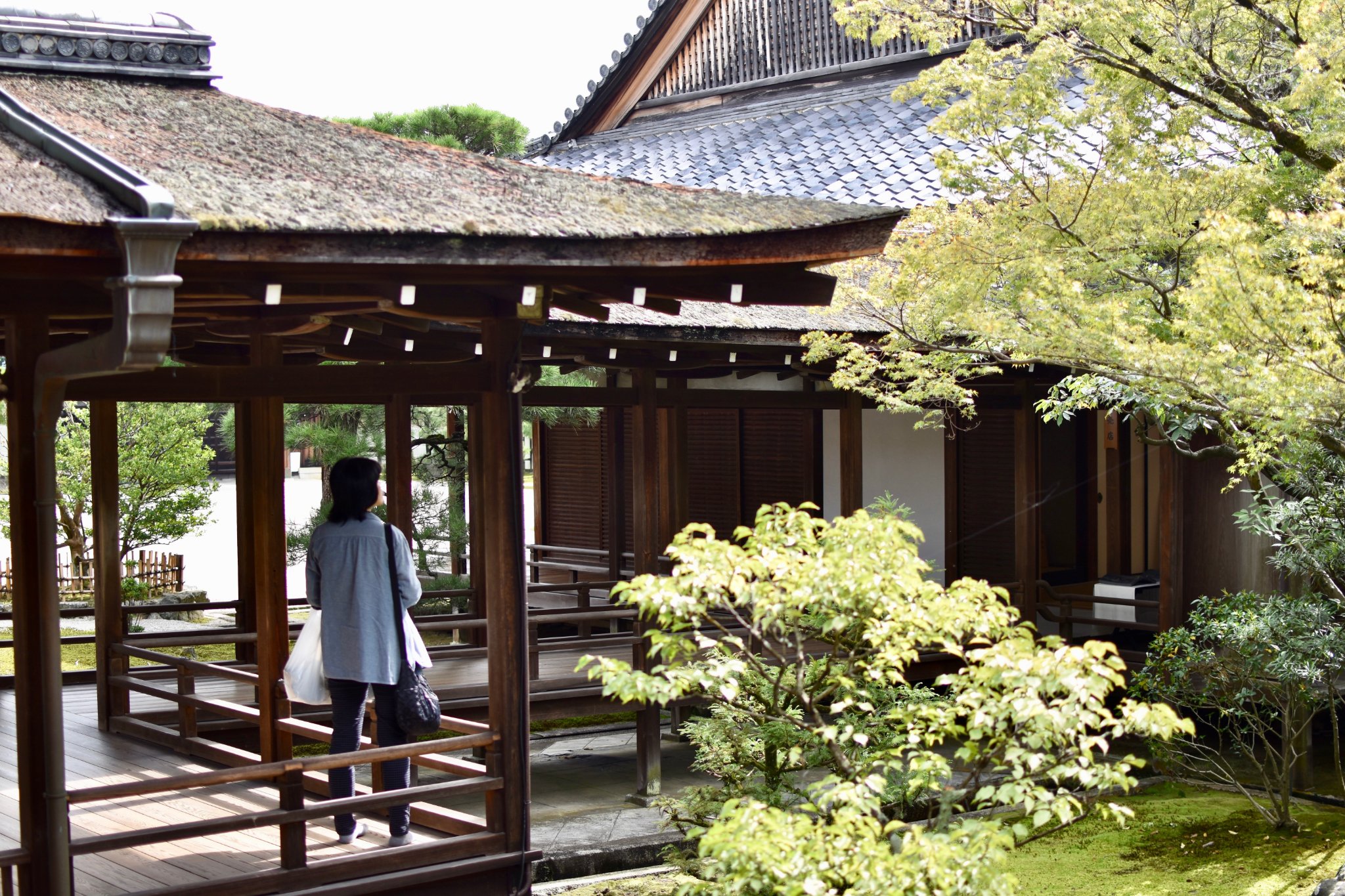
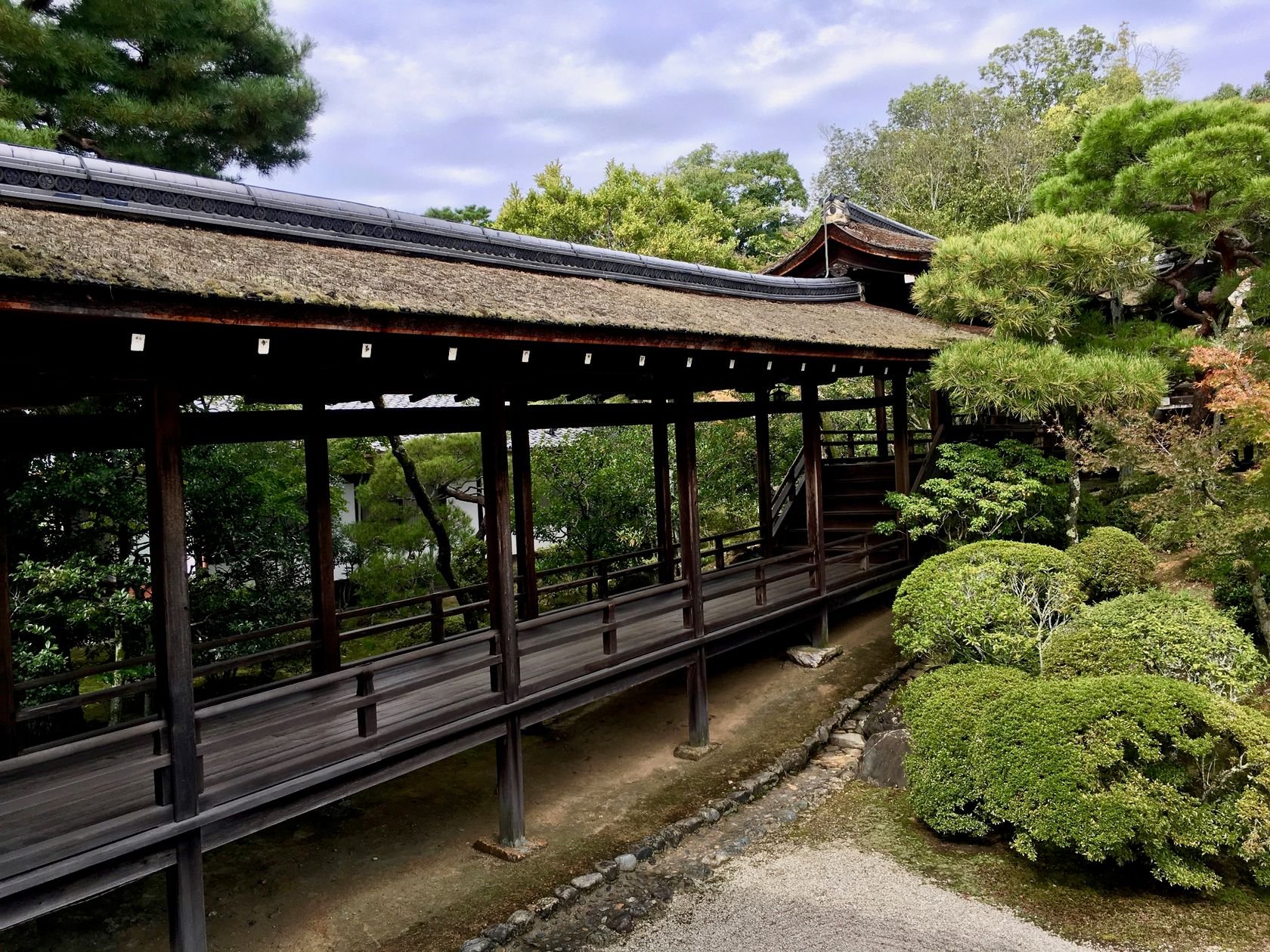
The rest of the visit continues with other wooden bridges to get back my shoes. In another part of the temple there is a very large pagoda and many other buildings, some of which are forbidden to visit. But it does not matter, what I saw that day well deserves the 500 yen of entry (about €3.80 or US$4.70).
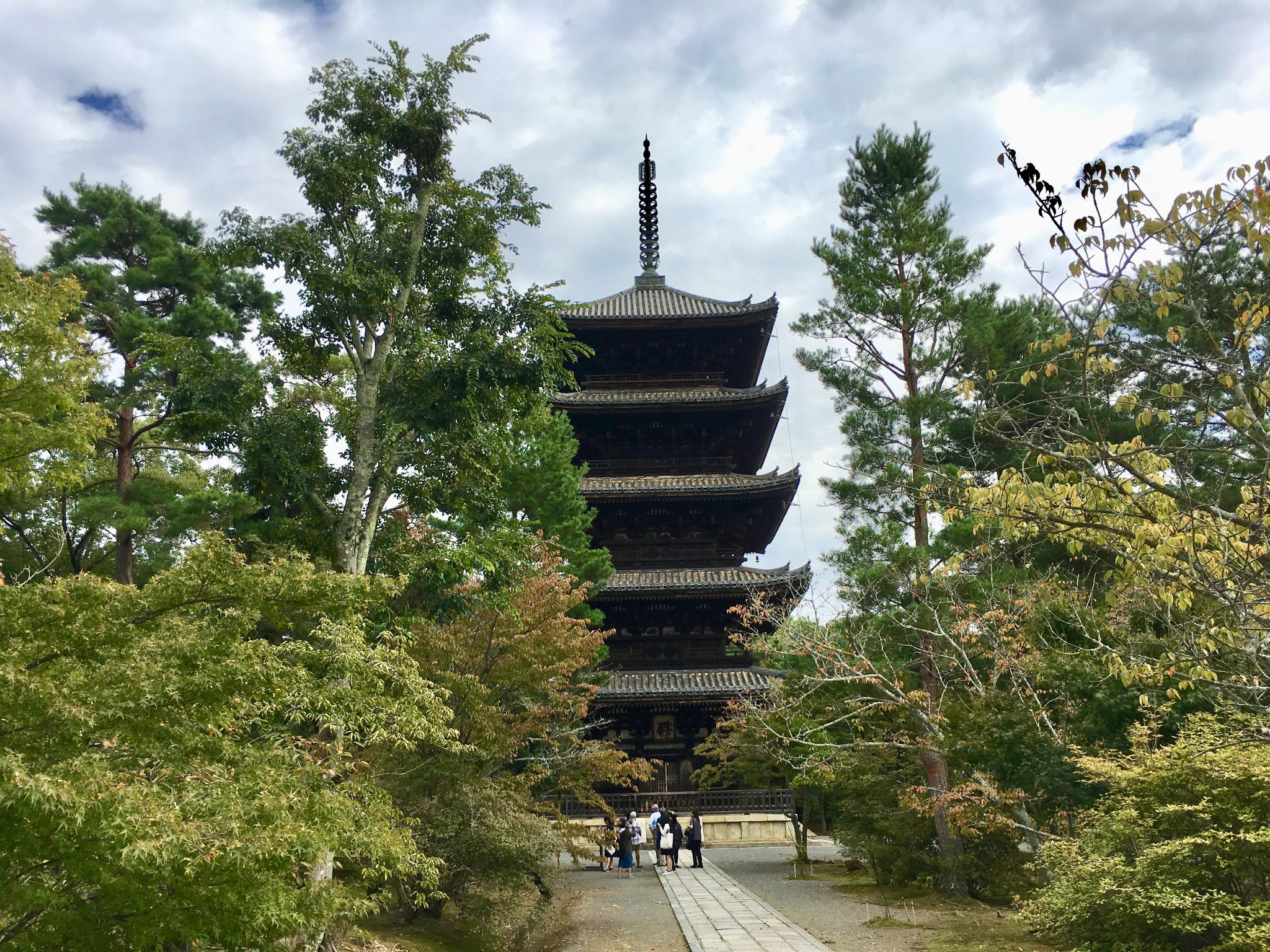
Yet I cannot resign myself to leave this place immediately to return to the hectic Kyoto. I notice a place with benches and vending machines. I settle down for a moment, with all these images in my mind. I needed those moments to leave the world of the sacred and return to the secular world.
-- @japon
01: Travel diary in Japan, by @japon
02: Tokyo, overcrowded city? Really? by @japon
03: Are the Japanese too disciplined? by @japon
04: Going to Japan without speaking Japanese? by @japon
05: Ueno, more than just a big park in Tokyo, by @japon
06: Asakusa, diving in the heart of Tokyo's historic district, by @japon
07: Ameyoko, Ueno's colorful market, by @japon
08: Tsukiji, the largest fish market in the world, by @japon
09: Climb the steps of Atago Jinja Shrine in Tokyo, by @japon
10: Hama Rikyu, an exceptional park in the heart of Tokyo, by @japon
11: Jimbocho, old books and tempura, by @japon
12: Shinjuku Gyoen Park and the best burger in the world!, by @japon
13: One night in Shibuya, by @japon
14: Takeshita dori : this little street dedicated to fashion (and good crepes), by @japon
15: They lie to you about Kyoto, by @japon
16: The temples and secret garden of Higashi in Kyoto, by @japon
17: Kinkaku-ji, the temple of the Golden Pavilion in Kyoto, by @japon
18: Ryoan-ji, the amazing stone garden in Kyoto, by @japon
